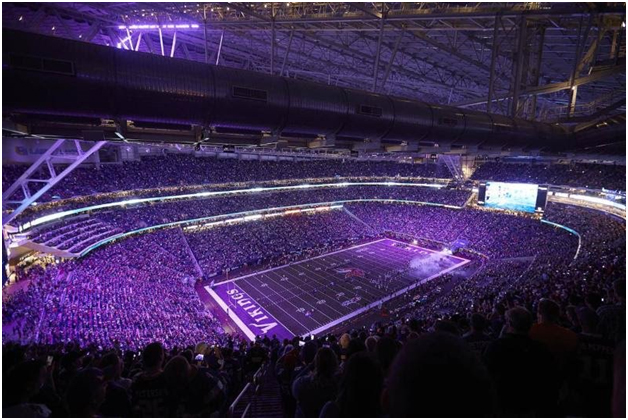
Lighting Requirements in Stadiums
Share

With the rapid advancement in technology, the lighting industry is constantly evolving. It’s not just the expansion of applications but even the existing fields have evolved to adapt a better usage of modern luminaires. As we have earlier discussed the disappearance of conventional lighting options. This time we are about to discuss the changing scenario of stadiums.
Trends suggest that the inefficient and outgoing metal halide lamps were first replaced by LED technology back in 2012 in New York for a Hockey match. Gradually, the LED technology changed the picture of the sports industry in the subsequent years.

Why LED technology is idle for Stadium lights?
Now with the popularizing LED technology that’s changing the trends, the question is what’s the main factor behind this transformation? Let’s answer this question in detail.
For any outdoor event, visibility is extremely crucial. Whether it’s an outdoor sports or a fully-packed concert, illumination is a great part of rendering an enriching experience to the spectators. Since LED lights are more efficient, they help in adding value to the event while keeping the ambience safe and spectacular.
When compared to the conventional lights, LED lights carry a myriad of advantages. They lower the energy expenditure by 75% and maintain brightness the entire time. Not only are these lights better in the form of aesthetics but they also have a longer life span.
Mentioned below are some factors that make LED lights ideal for stadiums:
1. Enhancing the Event:
LED lights not only make the event a pleasant experience for the audiences but also help the performers deliver better. In case of sports like Hockey, these luminaires don’t create any dark spot or glare unlike the metal halide lamps. This helps the players understand and judge the distance and direction of the puck. Likewise in cricket, players can perceive the position of the ball in a better way. Hence lighting could play a pivotal role in determining the fate of a game.

2. Better Broadcasting:
With the advent of digital broadcasting, the use of modern cameras is inevitable. However the metal halide lamps are not ideally suitable to be used with these advanced set of equipment. Owing to the trendy 4k HD technology that has become the quintessential element for everyone watching the game on their devices, the lighting has to be perfect.
The LED lighting is the most appropriate kind of lighting to be mated with high definition cameras. This helps in capturing the game in detail with slow motion at multiple angles.

3. Output and Variation:

Nowadays, stadiums are equipped with advanced lighting controls and it’s only logical to use LED lights as these are laden with features that can make any event special. For example, the stadium can be illuminated with a variety of colorful lights in sync with the theme of the performance/event or the team’s color code.
Furthermore, the RGB color changing lighting aid in enriching the overall experience for both audience and the participants. There can be moments like when the home team scores, or a player makes the perfect shot which can be used to highlight a wide range of variations in the lighting.
4. Cutting down the cost:
Stadiums require lighting over a vast area and hence it’s only logical to use LED lights that cut down the cost while saving energy. LED lights can even be dimmed down by the end of the show when the audience starts to leave. Besides, these are more efficient and require minimum maintenance.
5. Environment Friendly
LED lights don’t produce harmful UV radiation which means that they are far less harmful to the audience as compared to the metal halide units. It’s definitely an advantageous feature of LED luminaires. Moreover, these lights are resistant to adverse climate, vibration, shock, etc. Besides, even the environment is benefitted with these energy efficient lights.









